In today’s competitive manufacturing landscape, achieving efficiency in CNC machining is more crucial than ever. By optimizing processes and embracing advanced techniques, companies can significantly reduce costs, improve productivity, and meet sustainability goals through efficient machining.
But how do we unlock these benefits and stay ahead of the curve? This comprehensive guide will explore the strategies for optimizing CNC machining processes and increasing productivity, from tool selection to lean manufacturing principles, all with a focus on efficient machining.
Key Takeaways
- Efficient machining is essential for reducing costs and increasing productivity in the manufacturing industry.
- Key factors influencing efficiency include tool selection, machine parameters, energy optimization techniques and lean manufacturing principles.
- Training of workforce is also important to ensure successful projects with efficient processes.
The Importance of Efficient Machining
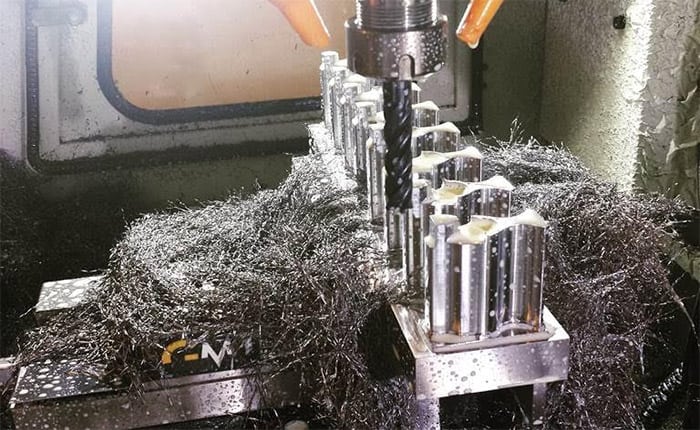
Efficient machining is pivotal to the manufacturing industry as it assists companies in cost reduction, productivity enhancement, and achieving sustainability goals. Designing components with efficiency in mind can not only facilitate the CNC machining process, but also decrease expenses, maximize part quality, and contribute to energy efficiency optimization.
Improvement in the CNC machining process can be achieved through careful selection of machine tools, adherence to CNC design protocols, and adoption of the best practices used by experienced manufacturers. Companies can reap the benefits of efficient machining and maintain competitiveness in the rapidly changing manufacturing industry by integrating these strategies.
Key Factors Influencing Efficiency in CNC Machining
CNC machining is an efficient and precise form of manufacturing that helps prevent tool failure and improve productivity. However, achieving maximum efficiency in CNC machining requires a thorough understanding of the key factors that influence efficiency, such as:
- Design for Manufacturing
- Tool selection
- Optimizing machine parameters
- High Efficiency Milling
- Machining Strategies for Roughing vs Finishing
- Proper Workholding and Fixturing
- Reducing Setup Time
- Precision Machining Strategies
- Implementing Lean Manufacturing Principles
- Multiple Shifts and Lights Out Machining
- Training and Education for Workforce
- Real Time Monitoring and Data Analysis
One of the most efficient CNC machining processes in terms of setup time and cost is CNC turning, which optimizes specific cutting energy and reduces setup time and cost. Operating CNC machines to their full capacity can result in increased efficiency and improved performance. For example, decreasing the cycle time by ten seconds per unit in a production run of 60 units would result in a time savings of 10 minutes.
Design for Manufacturing (DFMA)
Most opportunities to reduce cost in machining occur at the design stage:

To learn more about Design for Manufacturing, check out our comprehensive guide.
Tool Selection and Maintenance
Choosing appropriate tools and their proper maintenance is key to optimal performance and efficiency in CNC machining. The most suitable cutting tool options for CNC machining in milling operations include:
- Drill bits
- End mills
- Face mills
- Reamers
- Taps
- Thread Mills
- Gear cutters
- Fly cutters
Optimize Tool Choice for Performance, not Tool Cost
Cutting tools are only about 3% of your budget. Let’s say you have found some super high-performance cutting tools that cost 2x what you had spent, but you can increase your cutting speed by 20%. In effect, increasing your cutting speed also increases your capacity by 20%. If you have enough business, you can take on that much more work.
The cost to gain that capacity increase is only an additional 3% as we double cutting tool costs.
Or, you can view it as saving 20% of the Fixed Costs (hourly) you’re assigning to a particular job. Again, if you have the ability to use the extra capacity you’ve created, you can translate your time savings either into more profit or lower bids which gives you more business.
Forget buying the cheapest cutters and focus on maximizing your cutting performance. You can maximize cutting tool performance through better geometry and coatings or better cutting tool materials.
Don't Forget Tool Maintenance
Sound maintenance of tools is indispensable for achieving peak machining efficiency and performance. Ensuring the tools are sharp, clean, and well-lubricated can significantly reduce the risk of tool failure and contribute to an efficient machining process.
Machine Parameters
Machine parameters such as spindle speed, feed rate, and depth of cut are instrumental in refining machining processes. For example, employing Constant Surface Speed, a programming technique utilized in turning centers, helps maintain a consistent spindle speed during tool changes. Inefficiently programmed surface speeds can lead to spindle slowing and speeding during equipment changes, resulting in increased program execution time.
Grasping and fine-tuning these parameters can significantly influence the efficiency and success of a CNC machining project. One of the fastest ways for Manufacturers to noticeably cut costs, enhance productivity, and reach peak efficiency is by optimizing machine parameters.
How to Optimize Machine Parameters
Optimizing Machine Parameters can either be done by trial and error, or by using a Feeds and Speeds Calculator that has an optimization function. Our own G-Wizard Calculator can do such optimization. It's optimizing function is called CADCAM Wizards.
G-Wizard's CADCAM Wizards are designed to find the optimal combination of Cut Depth, Cut Width, Spindle RPM, and Feedrate for a particular machining operation such as pocketing, profiling, homemaking, or facing:
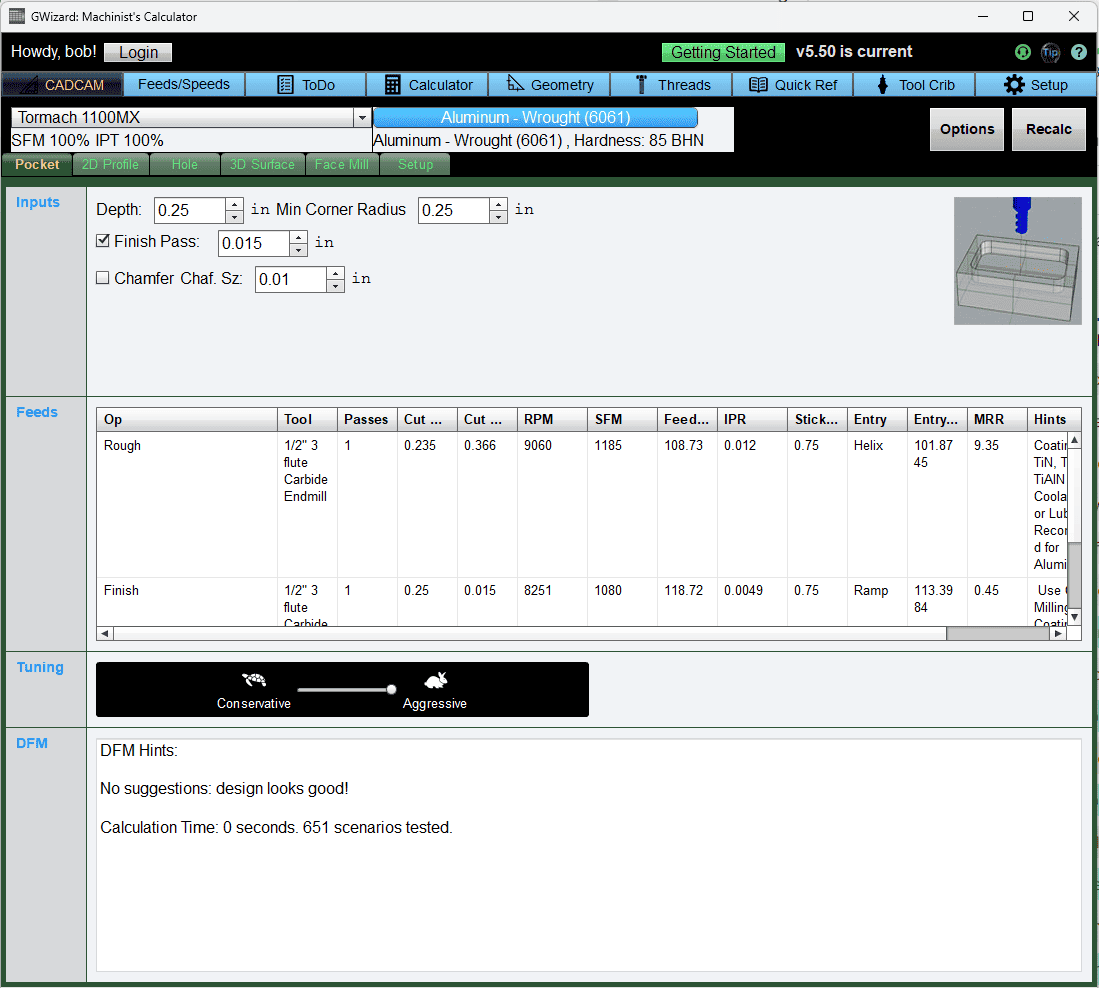
The inputs for CADCAM Wizards are simple. Given those inputs it uses machine learning AI technology to optimize the parameters. In doing so, it considers over 60 variables.
It will make sure to keep tool deflection under control, avoid exceeding your CNC machine's capabilities, and much more while maximizing Material Removal Rate and keeping Tool Life to reasonable levels.
Material Removal Rate
Material removal rate (MRR) is the quantity of material removed from the workpiece in a given interval of time. MRR has a direct influence on machining efficiency; an increase in MRR results in quicker machining times and improved productivity, while a decrease in MRR can lead to longer machining times and decreased productivity.
Choosing the right tool, optimizing machine parameters, employing high efficiency milling techniques, and incorporating lean manufacturing principles are recommended to maximize the material removal rate. Manufacturers can considerably enhance their machining efficiency and overall productivity through the execution of these strategies.
High Efficiency Milling Techniques
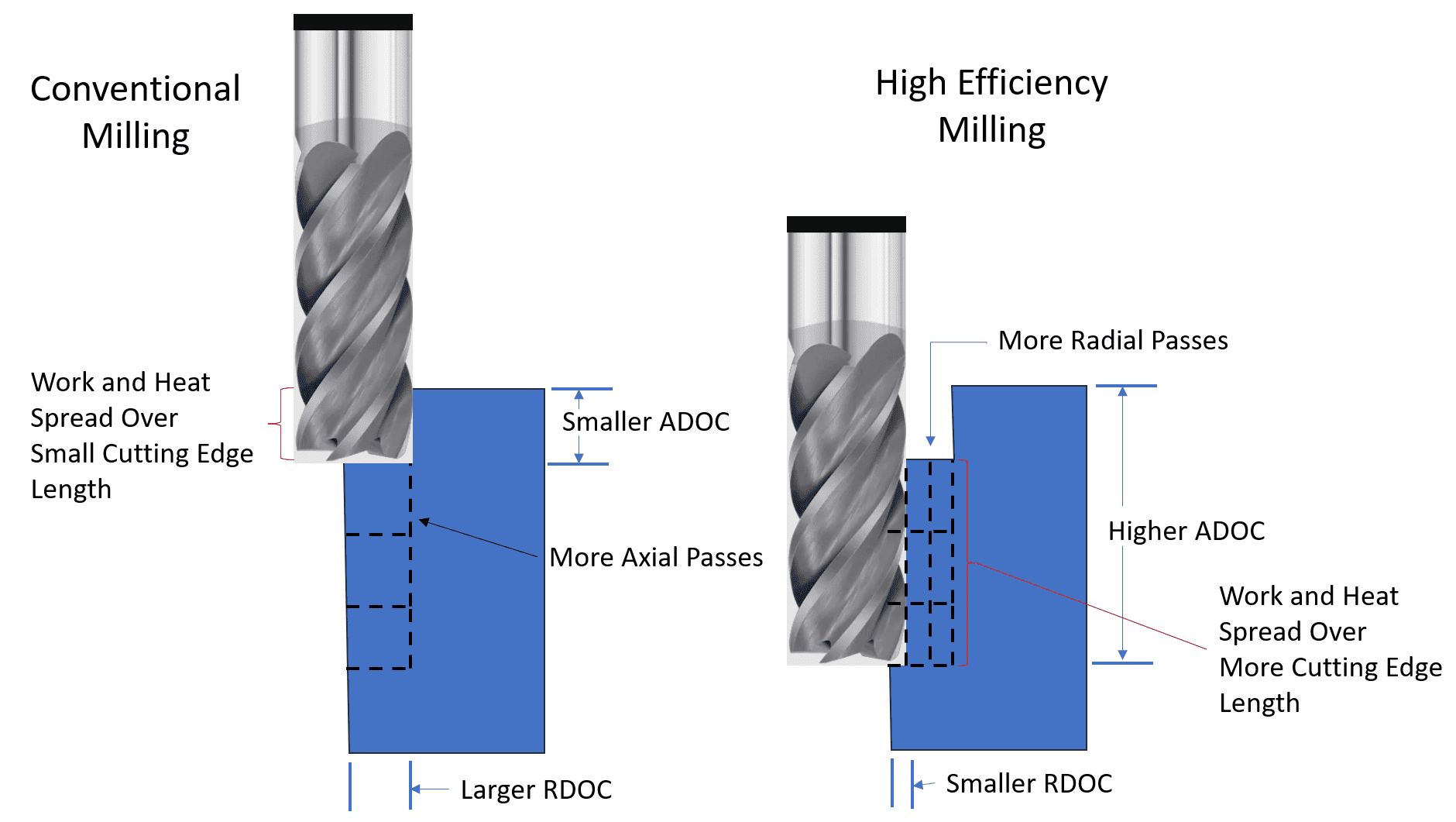
High Efficiency Milling (HEM) is a milling technique capable of reducing cycle times and extending tool life. HEM focuses on effectively using higher Axial Depth of Cuts and lower Radial Depth of Cuts to optimize the machining process. Chip thinning and controlling the angle of engagement assist in the efficiency as well. The use of HEM allows manufacturers to boost productivity and enhance the competitiveness of their production facilities.
The success of HEM depends on three essential components.
- Tool path: Intelligent tool paths generated by CAM software effectively manage cutting forces and maximize productivity.
- Tooling: Smaller end mills with a greater number of flutes (and a more robust, stronger core) running at higher speeds and feeds contribute to the efficiency of HEM processes.
- Technique: The proper technique in executing HEM processes is crucial for achieving optimal results.
G-Wizard's CADCAM Wizards automatically optimize for the combination of higher MRR and higher Axial Depth of Cut thus delivering HIgh Efficiency Milling (HEM) right from the start.
Machining Strategies for Roughing vs Finishing
Roughing is the part of the machining process where we achieve maximum Material Removal Rates. Finishing is were we achieve desired tolerances and surface finishes.
The simplest strategy is just to use the same cutter for both roughing and finishing, but that strategy is likely leaving money on the table. Here are some ideas for machining strategies that can improve your roughing efficiency:
- Use a roughing endmill, sometimes called a "corncob" endmill.
- Use a larger diameter endmill for roughing than you use for finishing.
- Use an indexable rougher
- Use an HSM constant tool engagement toolpath
In simulations, we found the best combination was 5.57x more efficient than simply using the same cutter for roughing and finishing:
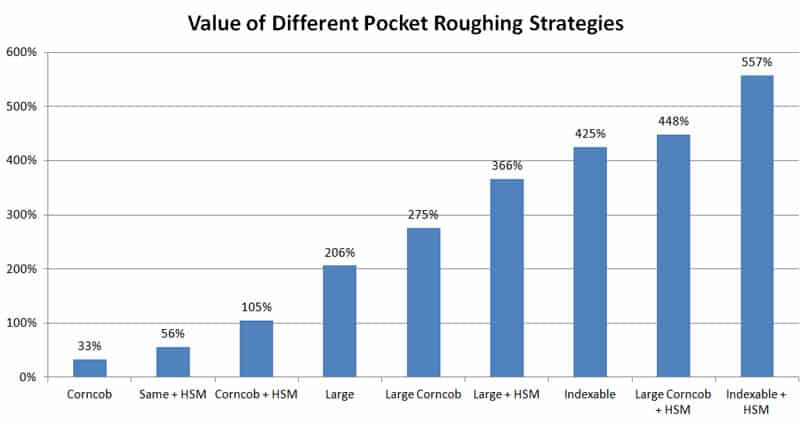
For a more comprehensive discussion of roughing strategies, see our article on Optimizing Material Removal Rate.
Proper Workholding and Fixturing to Reduce Setup Time
The more workpieces you can set up on your machine at once, the lower the set up costs. The spindle can be kept running for much longer relative to setup costs, which almost always increases machining efficiency.
This is a deep subject, so I refer you to the following articles for more information:
- Total Guide to CNC Jigs, Fixtures, and Workholding Solutions for Mills
- Fixture Design Fundamental [ Do You Need a Fixture? ]
- Winning the High Mix Low Volume Manufacturing Game [ HMLV ]
Precision Machining Strategies
Maintaining closer tolerances is expensive and can radically affect your machining efficiency. See our article on the high cost of close tolerances if you don't believe it.
But there are ways to make precision machining more efficient. In general, high precision means bearing the cost of inspection. What can we do to increase the efficiency of inspection.
First, it may be cost effective to put Coordinate Measuring Machines on the Shop Floor. This means they're not all tied up in your Metrology Lab and the Shop Floor can get faster feedback on how well tolerances are being held.
Second, you may be able to automate your inspections through in process probing. See our article on RAMTIC for a revolutionary manufacturing process based on this.
Implementing Lean Manufacturing Principles
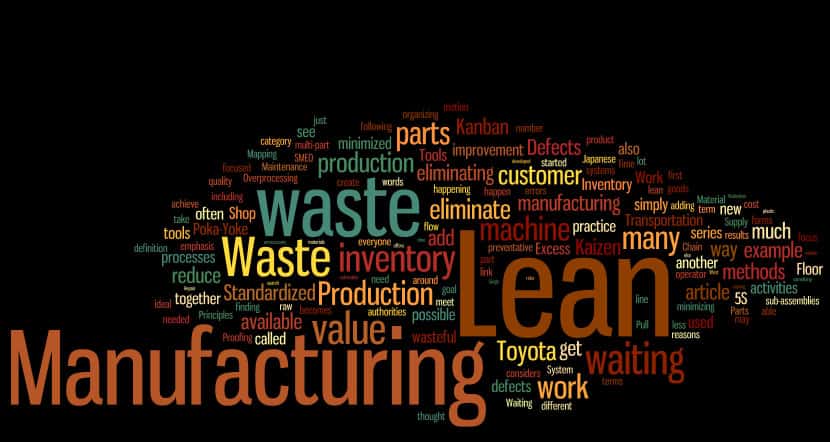
Lean manufacturing aims to reduce wasteful processes while still meeting the required quality standards. It is an efficient approach to producing goods with fewer resources. Manufacturers can minimize waste, simplify their manufacturing process, and improve efficiency by incorporating lean manufacturing principles into CNC machining operations.
Some of the core principles of lean manufacturing include reducing waste, streamlining processes, and enhancing quality. The application of these principles in CNC machining processes enables manufacturers to refine their operations, boost productivity, and maintain competitiveness in the industry.
For more on Lean Manufacturing, see our comprehensive guide.
Multiple Shifts and Lights Out Machining
Multiple Shifts and Lights Out Machining are two different approaches to solving the same problem:
Your CNC Machines are capable of running 24×7. Why have them sit idle when they could be earning you money?
We offer articles on both strategies:
Training and Education for Workforce

Workforce training and education are indispensable in ensuring efficient CNC machining processes, maintaining safety standards, and enhancing overall productivity. Adequate training and education can assist personnel in understanding the processes and approaches related to CNC machining, as well as the safety regulations that must be observed.
Effective training and education methods for CNC machining include:
- Apprenticeships
- College courses
- Online resources
- Hands-on experience
- Company-specific training
Manufacturers can guarantee top-tier efficiency and safety in their CNC machining operations through investment in workforce training, education, and the implementation of advanced manufacturing systems.
Real-time Monitoring and Data Analysis
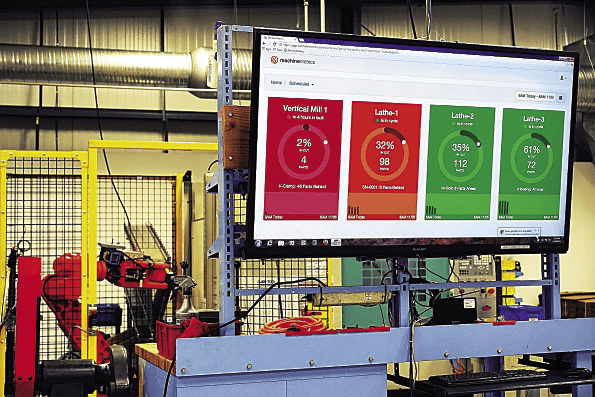
Image courtesy of Cutting Tool Engineering...
Real-time monitoring and data analysis involve gathering, examining, and interpreting data in a timely manner to identify areas for improvement, optimize machining processes, and improve overall efficiency. This can help reduce costs, improve quality, and enhance productivity.
The use of these tools provides manufacturers with valuable insights into their CNC machining processes, enabling them to make data-driven decisions to refine their operations.
Summary
In conclusion, achieving efficiency in CNC machining is essential for staying competitive in the manufacturing industry. By optimizing processes, embracing advanced techniques, and investing in workforce training, companies can significantly reduce costs, improve productivity, and meet sustainability goals. By understanding and implementing these strategies, manufacturers can unlock the benefits of efficient machining and stay ahead of the curve in today’s rapidly evolving manufacturing landscape.
Frequently Asked Questions
What is machining efficiency?
Machining efficiency is all about the cost to machine a particular part. Most machining costs are a function of time, so making the part in a shorter time generally increases machining efficiency.
What is the highest accuracy machining?
High accuracy machining is achieved by using state-of-the-art CNC machines that can handle tight tolerances. There are some specific strategies to increase the machining efficiency of high accuracy machining including putting CMM's on the shop floor and employing in-process probing.
What is a machining strategy?
A machining strategy is a cutting mode for a tool during an operation, determining the depth and trajectory of the tool for optimum results.
What is the difference between conventional and high speed machining?
Conventional machining involves significantly longer contact time between the tool and workpiece compared to High Speed Machining, as well as greater cutting force.
What are the key factors influencing efficiency in CNC machining?
There are many, but the most important are tool selection, optimizing machine parameters, and material removal rate.
Be the first to know about updates at CNC Cookbook
Join our newsletter to get updates on what's next at CNC Cookbook.